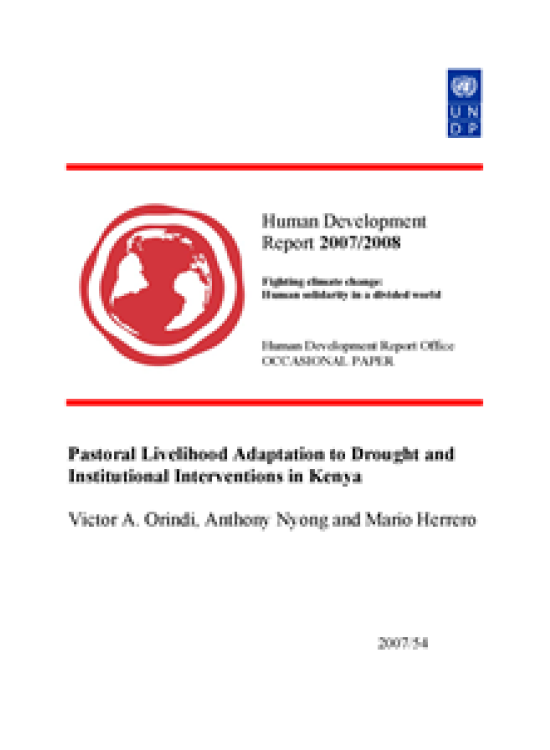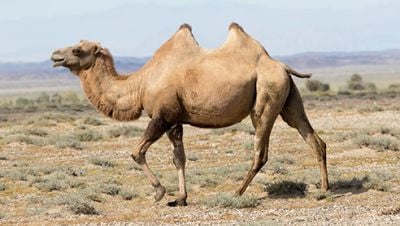Pastoral Livelihood Adaptation to Drought and Institutional Interventions in Kenya

Download Report by Language
Document
orindinyongherrero.pdf
(338.59 KB)
Citation
Orindi, Victor A., Nyong, Anthony, Herrero, Mario. 2008. Pastoral Livelihood Adaptation to Drought and Institutional Interventions in Kenya. New York.
Pastoral Livelihood Adaptation to Drought and Institutional Interventions in Kenya
Posted on: January 01, 2008
Kenya straddles the equator, lying between latitudes 5o north, and 5o south and between longitudes 34o and 42o east. Kenya’s climate can be described as varied, ranging from the humid tropical climate around the coast, through the montane climate of the highlands to the arid and semi-arid climate inland and to the northern parts of the country. While mean temperature varies with elevation, the more remarkable climatic variation is with respect to precipitation (Figure 1). Inter-annual and intra-annual rainfall variability is high in Kenya, and in the last half-century, rainfall means have been decreasing inland and increasing on the coast. Over two thirds of the country, particularly areas around the northern parts of Kenya receive less than 500mm of rainfall per year and are classified as Arid and Semi-Arid Lands (ASALs). These are home to approximately 10 million people, a third of Kenya’s population (Figure 2). Agriculture is the main sector of the Kenyan economy and its performance strongly influences overall economic performance. Livestock production (largely through Pastoralism) is a production strategy in which people raise herd animals as a means to earn a livelihood, particularly in ASALs. Livestock production accounts for 26% of total national agricultural production and over 70% of the country’s livestock and 75% of wildlife are in the ASALs (GoK, 2005). Pastoralism relies on the availability of water, pastures and labour to thrive - with water as the determining factor.

